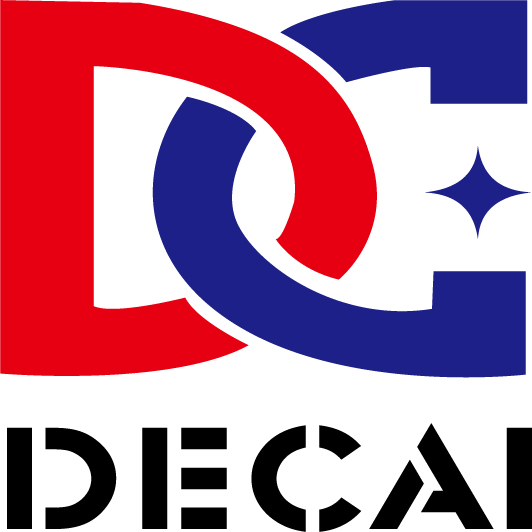The use of heat transfer printing on glass bottles
Thermal transfer film is a technical method that prints patterns and glue on a heat-resistant film, and adheres the pattern (ink layer) and glue layer to the glass bottle through heat and pressure. This process is mostly used on plastics and paper, and is less commonly used on glass bottles.
Thermal transfer printing process flow is: 1. Color draft; 2. Printing film; 3. Thermal transfer printing; 4. Baking.
Thermal transfer film is generally divided into five layers. The outer PET film layer serves as the carrier, and the separation layer plays the role of suitable falling off when heated. The protective layer plays the role of protecting the ink layer. The ink layer is for pattern printing, and the bonding layer is the adhesion layer.
Since multi-color patterns can be printed at one time during the film printing stage, the existing patterns can be transferred to the glass bottle at one time during the transfer operation. Compared with the tedious registration of multi-color silk screen printing, the printing process can be greatly shortened and the material loss caused by printing errors can be reduced. Nowadays, labor costs are constantly rising, and customers have high quality requirements for accurate positioning. Therefore, the advantages of thermal transfer printing are very significant in the processing of multi-color manuscripts.
In addition, in the film printing stage, CMYK printing is routinely used, and spot color printing can also be performed according to customer requirements. The effect of thermal transfer printing is more vivid, the color restoration is high, and gradient colors can be completed. Because the pattern of thermal transfer is baked by heat, the pattern color of the finished product will be stronger than that of water transfer, and will not easily fade. It has good properties such as corrosion resistance, aging resistance, wear resistance, and high temperature resistance.
In the processing of glass bottles, compared with water transfer printing and silk screen printing, the advantages of thermal transfer printing are more significant.
In general, compared with traditional water transfer printing and silk screen printing, the advantages of thermal transfer printing are: less manpower consumption, high degree of automation, fast, accurate color registration, high yield, and less environmental pollution.
However, the disadvantage of thermal transfer printing is that it requires high regularity of the substrate, and the work needs to be carried out in a more regular direction. The processing of square bottles and cylindrical bottles is more advantageous. Special-shaped bottles need to be analyzed based on the entity to determine the processable position.
In the development of thermal transfer printing, in addition to general toner inks, many new types have also been developed, including pearlescent ink film, mirror ink heat transfer film and heat transfer film with hot stamping.
Post time: Sep-28-2023
